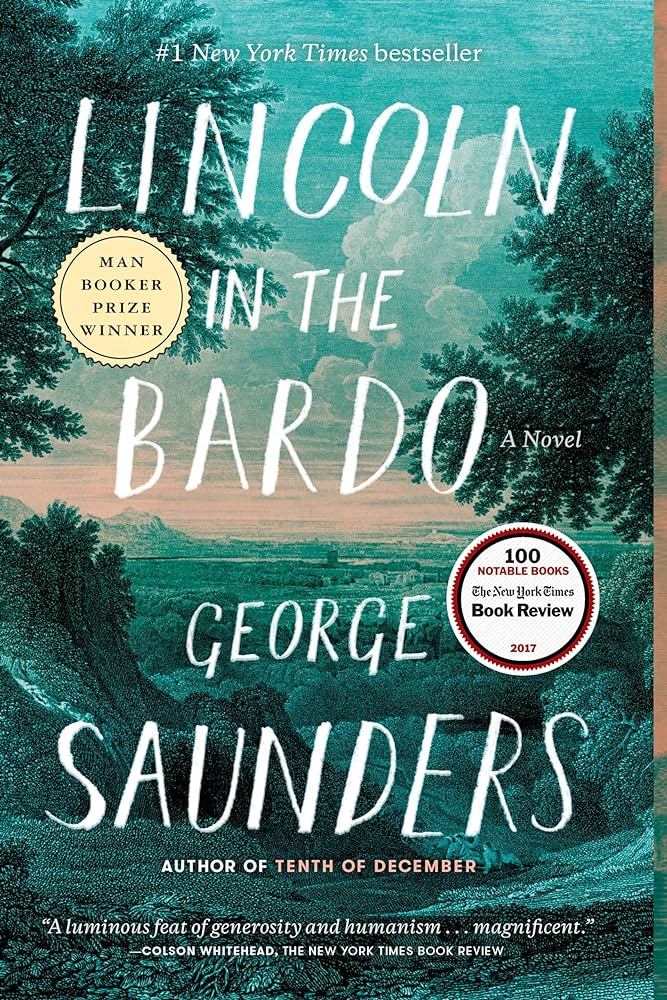Kitty Kelley Book Club: Thinkin’ in the Bardo
By • June 12, 2024 0 1082

George Saunders did not want his tombstone to read: “Here lies a guy who never did what he wanted to do.” So in 2017, at the age of 59, having mastered the art of the dystopian short story, Saunders secretly began writing his first novel.
Four years later, he burst into the literary stratosphere with “Lincoln in the Bardo,” which earned him the Man Booker Prize. Colson Whitehead, already in that stratosphere, called Saunders’s book “a luminous feat of generosity and humanism.”
In the Tibetan Book of the Dead, the bardo is the interim space between life and afterlife. Spirits who have not yet reconciled their deaths must remain there until they resolve lingering issues and can proceed to their next incarnation.
“I was raised Catholic, where purgatory is like the DMV,” said Saunders, now a practicing Buddhist. Saunders made his literary bona fides as a comic sci-fi writer and published frequently in the New Yorker. During that time, he was named a MacArthur Fellow — the recipient of a “genius grant” — garnered a Guggenheim Fellowship and won the PEN/Malamud Award for Excellence in the Short Story. In addition, he became a full professor at Syracuse University, where he teaches in the MFA program.
Those prestigious awards seem to hang lightly on Saunders, whose scruffy beard and rumpled jeans make him look a bit impish, rather like a choirboy gone rogue. Politically, he admits to being a liberal (“left of Gandhi, actually”) and acts as comfortable behind a lectern as he is conversing with Stephen Colbert on late-night television.
Saunders recently returned to Washington, D.C., to speak at the Library of Congress, where he had received its 2023 Prize for American Fiction. The following day, he led a small troupe of admirers to the marble crypt in Oak Hill Cemetery where Abraham Lincoln’s 11-year-old son Willie, who died of typhoid fever on Feb. 20, 1862, once lay. Willie became pivotal among the 166 characters Saunders created in his prize-winning novel.
Leading the group through the 150-year-old cemetery at the top of Georgetown, Saunders related how the grief-ravaged president rode his horse late at night from the White House to sit in the gated crypt belonging to William Thomas Carroll, where he held the casket of his beloved son. The Carroll mausoleum is the most visited gravesite in the cemetery.
In addition to sharing his family’s crypt with the president, Carroll, clerk of the U.S. Supreme Court, had loaned Lincoln his family Bible in 1861 for his swearing-in. President-elect Barack Obama used that same Bible for his own 2009 swearing-in.
“The thing about a place like Oak Hill … walking through it always makes me feel more alive and more urgent about … whatever it is I’m supposed to be doing down here,” Saunders wrote on his Substack account of the visit. “There’s no ‘we’ and no ‘them.’ There’s just life and then that grand waterfall we all will have to go over.”
During the tour, the cemetery archivist presented Saunders with a circa-1862 key of the type Lincoln would have used to gain entry to the cemetery. (“Do I love this kind of thing?” Saunders wrote later. “You know I do.”)
He recalled being transported the first time he visited the gravesite: “Wow. This really happened. Lincoln, really, for sure, stood here … somehow that made me feel I could and must write the book.”
The publication of “Lincoln in the Bardo” has bound Saunders to the Georgetown burial ground in ways he never imagined while writing. In addition to the novel’s prizes and plaudits — which include the 2018 Audie Award for audiobook of the year — the Metropolitan Opera has commissioned American composer Missy Mazzoli to create an opera based on Saunders’s book, to debut in 2026. A movie is also in the works. “This connects me forever to Oak Hill,” said Saunders.
Later that evening, he spoke in the cemetery’s Renwick Chapel, where Willie’s funeral was held. Standing in front of the huge stained-glass window, featuring a giant angel uplifted by iridescent wings, the professor talked about the creative process and how he met the challenge of conjuring spirits to communicate with the anguished Lincoln, who finds the strength amid the graveyard’s clamoring lost souls to rise above his personal sorrow and lead the country through the Civil War. Saunders believes it was that graveside evolution within Lincoln that enabled him to write the Emancipation Proclamation.
“When a writer has a problem, the reader feels it, and then, when the writer identifies and addresses that problem — presto — this feels like originality and innovation,” he told the chapel crowd.
Some writers never get to “presto,” but for those who do, exhilaration awaits. In conveying the magic of creativity, Saunders echoed William Faulkner’s 1950 Nobel Prize address about the writer’s responsibility to create “out of the materials of the human spirit something which did not exist before.” George Saunders did exactly that with “Lincoln in the Bardo.”
Georgetown resident Kitty Kelley has written several best-sellers, including “The Family: The Real Story Behind the Bush Dynasty.” Recent books include “Let Freedom Ring: Stanley Tretick’s Iconic Images of the March on Washington.” She serves on the board of BIO (Biographers International Organization) and Washington Independent Review of Books, where this review first appeared.

